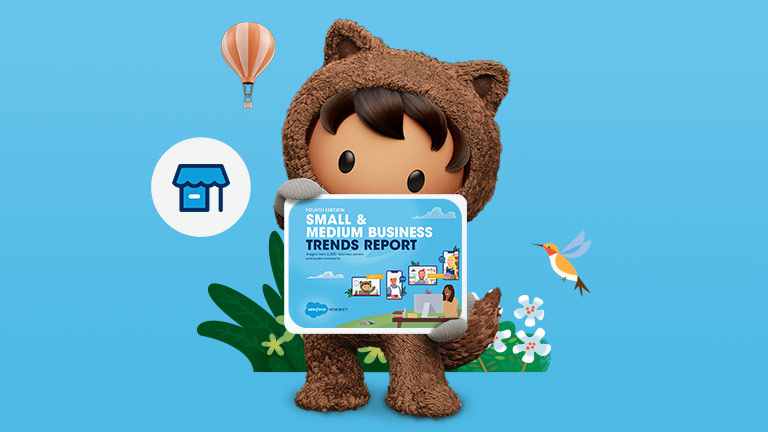Productivity, innovation and sales drive small businesses to better places. When productivity lags, SMEs can struggle to maximise their potential. And in a quickly changing world where competition is fierce and sales reps face increased customer expectations, anything less than ‘exceptional’ is not good enough.
But how can businesses drive productivity to meet their goals? And how can productivity lead to better service and increased sales?
Let’s look at how productivity and innovation are intertwined and see how increased productivity can help SMEs improve their sales and provide better customer experiences.
SMEs can empower sales and service reps to be innovators
Innovation has always been an essential consideration for SMEs. After all, small businesses have to make the most out of limited resources. Luckily, we’re living in a time when innovation is open to all. Today, anyone can build apps with zero coding knowledge.
There are already hundreds of pre-built apps and cloud-based platforms directed at sales reps and service agents. But the opportunity to easily build your own solution? That’s something new. By combining development tools with on-demand training platforms, businesses can empower their workforce to create their own solutions. And finding creative solutions to problems is where innovation truly begins. Just ask the makers of Play-Doh, which was initially developed as a wallpaper cleaner. Or the Slinky, which was created to stabilise nautical devices.
We don’t all have to be Elon Musk to innovate. It only takes a sales rep who foresees a need for a VR sales tool, or a service agent who discovers a way to remove a digital bottleneck and provide better experiences for their connected customers. Or a retailer that responds to lockdown measures by developing a virtual concierge and creating a new retail playbook.
Innovation positions SMEs to be more productive; from streamlining existing sales processes to developing completely new workflows or revenue streams, this productivity drives further innovation.
Innovation doesn’t require a massive budget
Unfortunately, many of today’s businesses cannot meet their innovation goals, even while realising how important innovation is.
A McKinsey report reveals that:
8 out of 10 business leaders believe that their business models are at risk
Nearly 85% say that innovation is critical for growth
Only 6% are satisfied with their company’s innovation performance
In a time of tight budgets and shifting sales models, these statistics reveal the issue at the heart of many SMEs. We need to innovate to succeed, but we can’t afford for those innovations to fail.
The rapidly changing landscape means that businesses need to change with the times, lest they fall behind their competitors and customer expectations. But the unpredictable nature of the new normal means they’re exercising plenty of caution, afraid to pay the price for a failed innovation initiative.
The good news for SMEs? Innovation doesn’t have to be costly. Studies have shown that innovation isn’t tied to budget. In many cases, larger companies are often less innovative. Whether this is down to a fear of getting too creative with an established brand or just that these organisations focus on execution rather than innovation, bigger isn’t always better when it comes to innovation.
SMEs can lean into their agility. They have more room for creativity and out-of-the-box thinking. World-changing companies can often begin with a single idea. And the best thing about ideas is that they don’t cost a thing. SMEs shouldn’t fear innovation; they should run towards it.
Get the team together
Innovation starts with company culture. A McKinsey survey showed that inspiring the workforce is the aspect of innovation that leaders most often get right. For these companies, innovation is everyone’s business.
For SMEs, this means it’s time to bring the team together.
4 ways that SMEs can create a more innovative workplace
Have a ‘hack’ day. If you’re familiar with running a SWOT analysis, you know how productive it can be to bring different small business departments together. By gathering employees from various teams, you can tap their collective brainpower to identify productivity gaps. Each department faces unique challenges, so why not have a day dedicated to hacking these issues and brainstorming solutions together?
Reimagine legacy IT systems. Cloud-based platforms connect teams and offer 360-degree views of the customer, helping to drive productivity, increase sales and provide better service. If your company still relies on outdated IT infrastructure, consider upgrading to Sales Cloud or Service Cloud platforms.
Leverage artificial intelligence. AI isn’t just a future concern; it’s already powering up SMEs across the EMEA and beyond. Using AI tools like Einstein can help sales reps get closer to their customers. Even better, use AI to automate routine processes. By freeing the workforce from mundane tasks, businesses can empower them to take on more creative work.
Create a cross-trained workforce. It’s never been easier to teach the workforce new skills. Instead of attending night courses and weekend classes, employees can learn on their commute or lunch break. On-demand learning platforms make it simple to turn the office into a custom-learning hub.
Creating a cycle of productivity and innovation
Once a culture of innovation is established, it will drive productivity. Technology can empower sales reps to get closer to their customers, creating new revenue streams. And as productivity increases, so will innovation. Freeing up employees from more mundane tasks means they can focus on higher-value work. They can be more creative and innovative. And as that innovation pays off, productivity will rise again.
Innovate. Drive productivity. Increase sales. Repeat.
The ‘small’ aspect of ‘small business’ doesn’t have to refer to a business’s productivity. Discover how Salesforce can help your small business.







